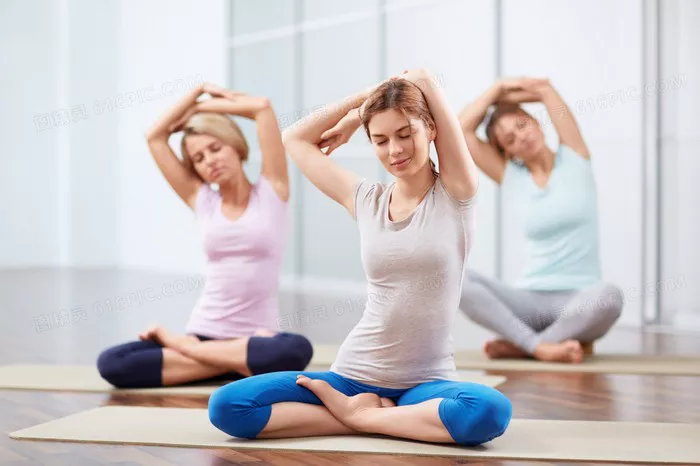Yoga, a timeless discipline that marries physical postures with mental tranquility, thrives on the concept of timing. When practiced at specific junctures throughout the day, its benefits amplify exponentially, fostering a profound and harmonious connection between body, mind, and spirit. Let’s embark on an in-depth exploration, armed with scientific insights, of the three most opportune times to step onto the mat and wholeheartedly embrace the transformative power of yoga.
The Dawn Chorus
Harnessing the Morning Energy Surge
As the world emerges from slumber, our bodies enter a natural state of readiness. Cortisol, the “wake-up” hormone, courses through our veins, priming us for activity. A morning yoga session capitalizes on this energy, using dynamic sequences like Sun Salutations to invigorate muscles and kickstart metabolism. The rhythmic flow of poses aligns with the rising sun, creating a harmonious blend of physical movement and natural rhythm.
Cultivating Clarity in the Quietude
The stillness of dawn provides a serene backdrop for focused practice. Without the distractions of daily life, poses such as Mountain Pose and Tree Pose become anchors for mindfulness. Deep breaths draw oxygen into the lungs, sending fresh blood to the brain and enhancing cognitive function. This early-morning clarity sets a positive tone for the day ahead, sharpening concentration and reducing stress.
Aligning with Circadian Rhythms
Morning yoga acts as a reset button for our internal clock. Twists and backbends stimulate the digestive system, while inverted poses improve lymphatic drainage. By engaging in these postures, we encourage the body to function optimally, supporting overall health and well-being. The gentle stretching and movement also help alleviate morning stiffness, promoting flexibility and mobility.
Midday Respite: Recharging Amidst the Daily Hustle
Beating the Afternoon Energy Dip
The midday slump is a common occurrence for many. As blood sugar levels fluctuate and fatigue sets in, a brief yoga session offers a natural pick-me-up. Gentle stretches like Standing Forward Fold and Seated Forward Bend increase blood flow to the brain, revitalizing the body and mind. This quick recharge eliminates the need for caffeine, providing sustained energy without the jitters.
Creating Mental Space in Chaos
In the midst of a busy workday, yoga serves as a sanctuary of calm. Poses like Corpse Pose and Child’s Pose allow for deep relaxation, interrupting the cycle of stress and anxiety. Guided breathing exercises focus the mind, reducing mental clutter and enhancing productivity. Taking just 15 minutes to practice yoga can transform the rest of the day, fostering a sense of balance and resilience.
Supporting Digestive Health
Eating lunch often leads to bloating and discomfort. Yoga poses that target the abdomen, such as Half Lord of the Fishes Pose and Wind-Relieving Pose, aid digestion by massaging internal organs. These postures stimulate the release of digestive enzymes, promoting better nutrient absorption and reducing digestive issues. Incorporating yoga into the midday routine not only eases physical discomfort but also supports long-term gut health.
Evening Unwind
Triggering the Sleep Response
As the sun sets, our bodies transition into rest mode. Evening yoga, particularly Yin and Restorative styles, aligns perfectly with this natural shift. Long-held poses like Pigeon Pose and Legs-Up-the-Wall Pose activate the parasympathetic nervous system, lowering heart rate and blood pressure. This relaxation response promotes the release of melatonin, the sleep hormone, ensuring a deeper, more restful slumber.
Releasing Emotional Tension
The day’s stresses often manifest as physical tension in the body. Hip-opening poses, such as Bound Angle Pose and Cow Face Pose, target areas where emotions accumulate. As we hold these postures, emotional blockages dissolve, replaced by a sense of peace and tranquility. This emotional release not only improves mental well-being but also enhances the quality of sleep.
Easing Muscle Fatigue
A day spent sitting or standing takes a toll on our muscles. Gentle inversions and stretches, like Supported Bridge Pose and Reclining Hand-to-Big-Toe Pose, relieve tension and reduce swelling. These postures improve circulation, delivering oxygen and nutrients to tired muscles. By incorporating evening yoga into the routine, we alleviate physical discomfort and prepare the body for a night of restorative rest.
Tailoring Your Practice
Seasonal Sensibilities
Yoga practice should adapt to the changing seasons. In summer, cooler practices like Hatha and Yin are ideal for morning sessions, helping to balance the body’s internal heat. In winter, warming flows such as Vinyasa and Power Yoga energize the body during midday. By aligning our practice with the seasons, we optimize the benefits of yoga and maintain overall health.
Life Stage Considerations
Yoga is a versatile practice that can accommodate different life stages. Pregnant individuals may find gentle, restorative poses beneficial for managing discomfort and preparing for childbirth. Seniors can focus on poses that improve balance and flexibility, reducing the risk of falls. By tailoring the practice to individual needs, yoga becomes a lifelong companion, supporting health and well-being at every age.
Mastering the Art of Timing: Essential Tips
Consistency is Key: Establishing a regular yoga routine, even if it’s just a few minutes each day, yields the best results.
Mindful Eating: Practice yoga 2-3 hours after a meal to avoid discomfort. A light snack before evening sessions can prevent dizziness.
Environmental Cues: Dim lights and soft music in the evening create a relaxing atmosphere, enhancing the benefits of yoga.
Conclusion
The best time to practice yoga is not a one-size-fits-all answer. It depends on individual preferences, lifestyle, and physiological needs. Whether you choose to greet the dawn with energizing poses, take a midday break for rejuvenation, or unwind in the evening for restful sleep, yoga offers profound benefits at every hour. By tuning into your body’s rhythms and aligning your practice with the right time of day, you unlock the full potential of this ancient discipline, fostering a life of balance, health, and inner peace.





















